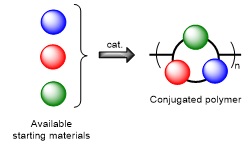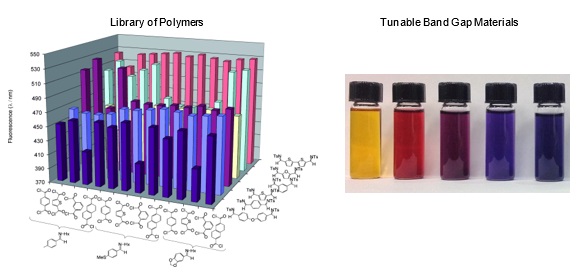Conjugated polymers have emerged as an interesting class of organic materials with potential applications as semiconductors, sensors, transistors, light-emitting diodes (LEDs), and in photovoltaics. Much in the way of pharmaceutical design, there is growing interest in polymer chemistry in exploiting molecular complexity as a tool to create precisely tuned materials with desired properties. While the traditional multistep synthetic methods can be used to synthesize these compounds, these create significant chemical waste, lose material with each step, can be impractical for large scale synthesis, and, due to the sheer number of steps, can take these compounds out of realistic access to chemists wishing to probe and tune their properties. To address these issues, we are designing new classes of polymerization reactions that can allow the synthesis of these complex polymers in a similar fashion to simple materials: by considering their structure to be assembled from multiple simple materials: multicomponent polymerizations.

In this context, we have developed a palladium catalyzed, multicomponent polymerization platform, and a complementary reaction mediated by phosphines. These approaches use simple starting materials (bis-imines, bis-acid chlorides, alkynes, alkenes) to generate conjugated polymers with complex repeat units in one-pot. Families of conjugated polymers with tunable properties can be easily accessed by changing each of the monomers. These multicomponent polymerizations provide a new way of assembling polymers from the same pool of monomers already exploited in large scale processes. We are currently exploring the range of different types of polymers we can prepare with this approach, as well as their potential utility. For example, we have initiated a collaboration of Prof. Klaus Meerholz (Cologne) to jointly probe the potential utility of the conjugated polymers we have made in electronic devices ranging from LEDs to photovoltaics.

